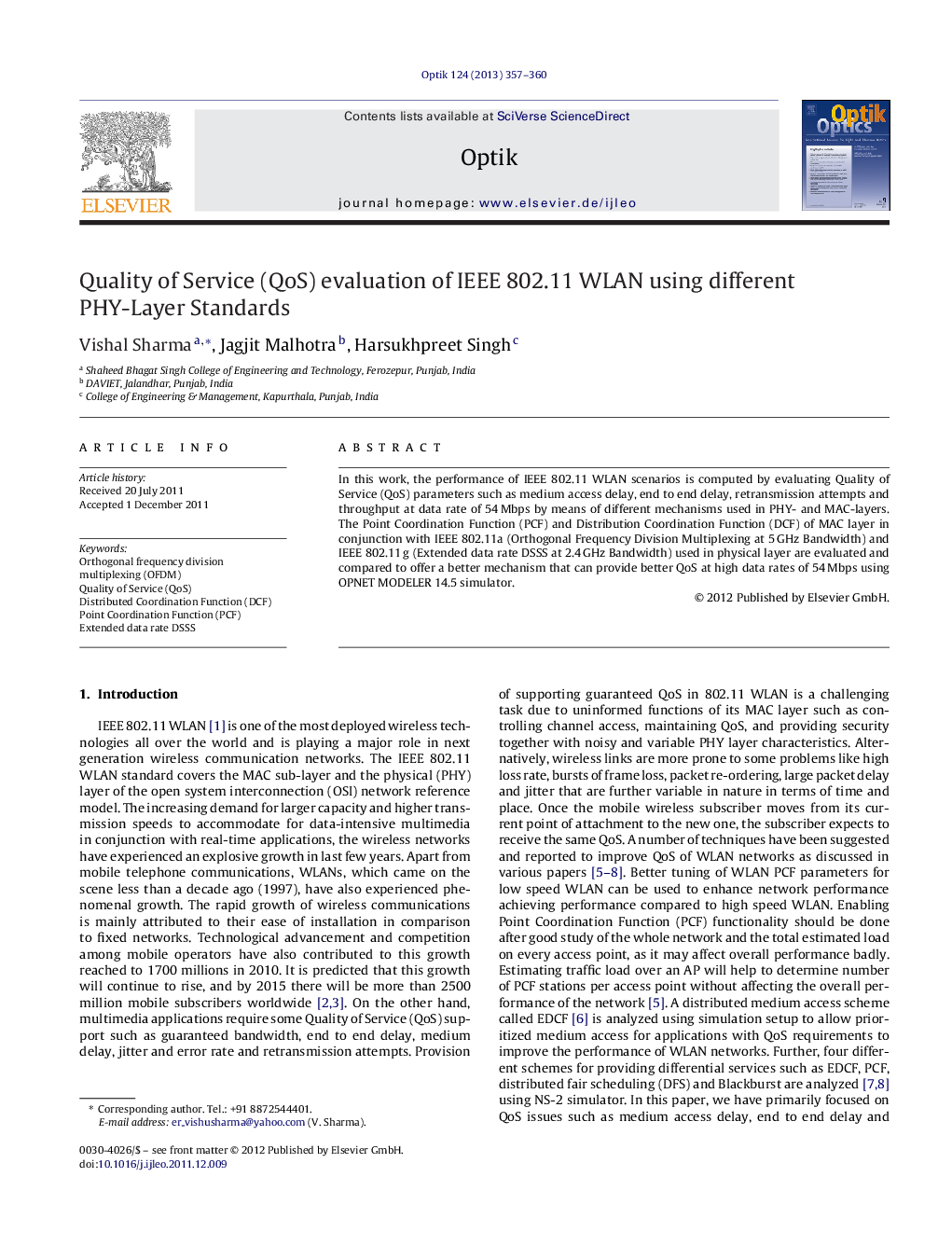| Article ID | Journal | Published Year | Pages | File Type |
|---|---|---|---|---|
| 846822 | Optik - International Journal for Light and Electron Optics | 2013 | 4 Pages |
Abstract
In this work, the performance of IEEE 802.11 WLAN scenarios is computed by evaluating Quality of Service (QoS) parameters such as medium access delay, end to end delay, retransmission attempts and throughput at data rate of 54 Mbps by means of different mechanisms used in PHY- and MAC-layers. The Point Coordination Function (PCF) and Distribution Coordination Function (DCF) of MAC layer in conjunction with IEEE 802.11a (Orthogonal Frequency Division Multiplexing at 5 GHz Bandwidth) and IEEE 802.11 g (Extended data rate DSSS at 2.4 GHz Bandwidth) used in physical layer are evaluated and compared to offer a better mechanism that can provide better QoS at high data rates of 54 Mbps using OPNET MODELER 14.5 simulator.
Keywords
Related Topics
Physical Sciences and Engineering
Engineering
Engineering (General)
Authors
Vishal Sharma, Jagjit Malhotra, Harsukhpreet Singh,
